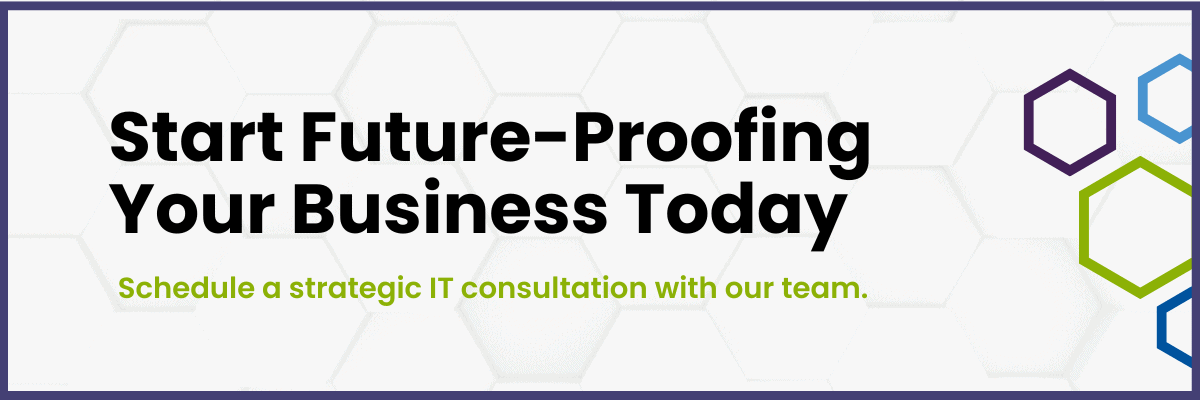The promise was simple: a revolutionary file transfer solution that would streamline operations and boost productivity. But in March 2025, CrushFTP users discovered the hard truth about rushing into new technology when a critical vulnerability allowed attackers to bypass authentication and gain full access to file servers.
Within days of disclosure, hundreds of organizations found themselves scrambling to patch systems while threat actors actively exploited the flaw.
Situations like this aren’t uncommon across the business world. Shiny new tools always promise transformative results, but without proper vetting, they can easily become your biggest security liability.
What “Revolutionary” Solutions Really Cost You
When Productivity Tools Become Security Nightmares
Take ChatGPT and similar AI tools that have swept through businesses worldwide. While these platforms offer impressive capabilities, recent studies show that 69% of organizations cite AI-powered data leaks as their top security concern in 2025, yet nearly 47% have no AI-specific security controls in place.
Research has also found that over the course of a single week in early 2023, employees at the average 100,000-person company entered confidential business data into ChatGPT 199 times. Each instance meant potential exposure of sensitive information to uncontrolled external systems.
The problem compounds because employees often don’t realize the implications. Sensitive data still makes up 11% of employee ChatGPT inputs, and the types of data being shared have expanded to include copying and pasting sensitive company documents into these tools.
Financial Consequences Beyond the Headlines
Security breaches grab attention for good reason. Their resulting financial damage extends far beyond immediate incident response costs. Organizations face:
- Business Disruption: When critical vulnerabilities emerge, organizations face immediate operational choices between maintaining business continuity and implementing emergency security measures.
- Regulatory Penalties: Healthcare organizations violating HIPAA face penalties reaching $1.5 million per incident. If you do business with companies in the EU, GDPR violations can result in fines up to 4% of annual global revenue.
- Reputation Damage: Customer trust, once lost, takes years to rebuild. Competitors gain advantage while your organization manages crisis communications and customer retention efforts.
“Shiny Object” Syndrome
Why Organizations Rush Into Untested Waters
The pressure to innovate drives many technology adoption decisions. Leadership sees competitors gaining advantages from new tools and demands rapid implementation to avoid falling behind. And, even if you know how highly calculated they are, marketing promises of revolutionary capabilities can still overshadow practical security considerations.
Common Vetting Failures
Insufficient Security Assessment: Organizations evaluate features and capabilities while overlooking fundamental security architecture and data handling practices.
Inadequate Testing: Pilot programs focus on functionality rather than comprehensive security testing across realistic business scenarios.
Compliance Blindspots: New tools may satisfy general security requirements while violating specific industry regulations or contractual obligations.
Vendor Due Diligence Gaps: Companies accept marketing materials and basic certifications without conducting thorough security audits or reviewing actual implementation practices.
Building a Structured Vetting Process
The key to avoiding costly technology mistakes? Systematic evaluation that goes beyond vendor demonstrations and marketing promises.
Essential Security Evaluation Steps
- Data Flow Analysis: Map exactly how information moves through the new system, including data storage locations, transmission methods, and third-party integrations.
- Access Control Review: Evaluate authentication mechanisms, user permission structures, and administrative controls to prevent unauthorized access.
- Compliance Verification: Confirm the tool meets specific regulatory requirements for your industry, not just general security standards.
- Vulnerability Assessment: Test the solution against current threat scenarios and review the vendor’s security track record and incident response history.
Financial Risk Assessment
- Total Cost Modeling: Calculate implementation costs including training, integration, ongoing maintenance, and potential security measures required for safe deployment.
- Business Impact Analysis: Evaluate how system failures or security incidents would affect operations, customer relationships, and regulatory standing.
- Exit Strategy Planning: Understand data retrieval processes and migration options if the tool fails to meet expectations or security requirements.
Additionally, do your research! It’s easy to get swept up in the hype, but when your business is on the line, it pays to look for professional guidance. (Speaking of which, you should check out our piece on the 5 best ways to use AI if you’re in financial services and looking to boost ROI).
The Anderson Approach to Technology Evaluation
Simplifying Strategic Technology Planning
Our vCIO services examine technology decisions through both security and business strategy lenses. We review vendor security certifications, audit reports, and breach history while testing actual implementations under realistic business conditions.
This strategic approach reveals gaps between promised capabilities and real-world performance before they impact your operations.
Risk-Managed Implementation Strategy
Rather than organization-wide rollouts, our vCIO team develops phased implementation strategies that start with non-critical functions and limited user groups. This approach helps us identify potential problems before they impact essential business operations. It also allows your staff to develop practical usage protocols that make sense for their workflows.
Continuous Strategic Oversight
Technology vetting doesn’t end at implementation. Our vCIO services establish ongoing monitoring systems to detect unusual behavior, maintain security configurations, and ensure compliance with evolving regulatory requirements.
We also provide regular technology reviews that identify emerging risks and opportunities, keeping your IT infrastructure aligned with business growth and changing security landscapes.
Lesson of the Day
Although the CrushFTP incident is concerning, the solution isn’t to avoid new technology—innovation remains essential for competitive advantage. Instead, organizations need structured evaluation processes that balance opportunity with risk. Like we learned at the annual EOS conference earlier this year (see our round-up here), we can only scale mountains one step at a time.
Thorough vetting protects against both immediate security risks and long-term financial consequences. The time you invest in proper evaluation prevents the much larger costs of security incidents, regulatory violations, and emergency remediation efforts.
Not Sure If That New Platform Is Secure?
Book a consultation with our team to evaluate technologies before they become liabilities. We’ll help you harness innovation while protecting your business from unnecessary risks.



